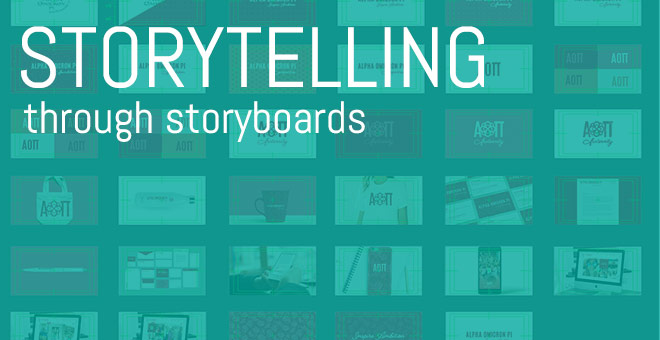Importance of Storyboarding

Video is king when it comes to quick content sharing and storytelling. Granted, video marketing is not a new concept, but it is becoming increasingly important in today’s oversaturated market because videos foster more engagement than static ads and typically hold the viewer’s attention for a longer period of time. According to Hubspot in 2016, 45 percent of people are watching more than an hour of Facebook or Youtube videos per week. Wow.
If you haven’t already dabbled in video marketing, now is the time! It can be daunting, though, for those who haven’t worked on such projects. While shooting video itself might seem like the most complex phase, what we’ve found is that post-production revisions are where things can really go off the rails. As with many things, planning on the front end, this time in the form of storyboarding, avoids costly mistakes at the back end.
What is a storyboard?
A storyboard is a sequence of graphic designs or static live-action shots representing the progression of a video. Imagine a flipbook. Each page in the book is one frame on a storyboard.
In an animated video, storyboard still shots help you see your story unfold screen by screen. Depending on the design, it might be difficult to visualize a moving picture in a motionless design, but it does provide an opportunity to share ideas and map out transitions before turning the designs into a choreographed dance. (We save freestyle for in-office dance parties.)
Why do we storyboard?
A storyboard may seem like an unnecessary step, especially if you’re working on a tight deadline. If the final product is animated, why don’t we just start and end with animation? The reality, however, is that storyboarding is one of the most important steps in the animation process and should never be ignored or rushed. It’s just like an architect drawing the blueprints of a house. Imagine you’ve just broken ground on your new home, then halfway through construction realize a door was placed in the wrong spot. Talk about a headache! A mistake like this will cost you time and money. Video production is no different. It is much easier to revise a static design than to change it during the animation process.
When storyboards are rushed, it often leads to preventable mistakes like spelling errors and design flaws. Editing a storyboard should be treated like editing a printed piece before sending to the printer. Once the storyboard is approved, the design, transitions, script, etc., are final. Rushed revisions later in the process are a surefire way to edit mistakes into the video. We are all human, so mistakes are bound to happen at some point, but the storyboard is in place in attempt to avoid small but highly visible errors.
Are you ready to tackle an animation or video project? Check out a few of our most recent videos for some animated inspiration:

